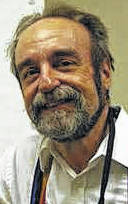
Late May and early June are the best times to discover where you are in the universe.
Your position on Earth and Earth’s position in its orbit conspire to surround you with your true home in the universe, your cosmic neighborhood, the Milky Way.
The Milky Way is a discus-shaped collection of 300 billion stars. Seen from the top of the discus, it looks like a child’s pinwheel, a whirlpool of stars 100,000 light-years across.
It has a fat central hub dense with stars. Spiral arms of stars trail gracefully from the hub. With Earth in tow, the sun is one of the stars about two-thirds of the way out on one of those spiral arms.
When seen from the side, our galaxy looks a bit like a cigar, wide but thin. And we can’t help but see it that way because we’re out near the edge of it. Late spring is special because the Milky Way is stretched around the horizon, and we can see where we are in the vast pinwheel.
Start looking just after dark. To the southeast, just rising, is the constellation Sagittarius, the Archer. Beyond the bright stars of Sagittarius is the faint glow of the center of the galaxy, the ball-shaped hub from which the spiral arms trail.
To the west, the constellation Orion is setting. If you go out in early spring, perhaps you can still see his right shoulder, the star Betelgeuse, shining redly close to the horizon. You are looking outward from the hub through the width of our spiral arm, sometimes called the Orion Arm, to the star-forming regions where giant clouds of hydrogen gas are still condensing into infant stars.
To the northwest, the bright star Capella in the constellation Auriga is just setting. In that direction, you are looking through and past the Orion Arm to the next arm out, the Perseus Arm at the Milky Way’s very outer reaches.
To the northeast, the constellation Cygnus is rising. You look down our spiral arm as it curves inward toward the hub. Here the view is thick with stars. As spring becomes summer, this region will rise higher in the sky, and binoculars will cause the area to explode into uncountable points of light.
If you gaze straight upward, you look through the thinnest portion of our galactic home outward into deepest space. High in the southeast is the constellation Virgo, the Virgin. Above it, far beyond the stars in the Milky Way, are the faint smudges of light that make up the Virgo Cluster of galaxies.
Here lie hundreds of Milky Ways, some of which are ten times larger than our galaxy. They are at such great distances that their light takes 45 million years to reach us.
Our region of the cosmos, the Milky Way, is enormous but only a tiny portion of our larger cosmic world. As you scan the horizon on these warm spring nights, you see our pinwheel neighborhood, a tiny island of 300 billion stars, separated from other galaxies by vast oceans of intergalactic space. But above you, your head points upward to an even larger realm, a universe of galaxies.
The universe contains perhaps six trillion galaxies and is perhaps 94 billion light-years wide. It was born in a stupendous cosmic explosion that astronomers have dubbed the Big Bang. In its long life, the galaxies have given birth to innumerable stars. Many stars have died, and many potential stars still exist patiently in clouds of dust and gas, waiting to be born.
But those words are mere abstractions, those numbers emotionally meaningless quantifications. The universe is vast beyond measure, more beautiful and terrorizing in its vastness than numbers — or words like these — can say.
Still, learn the stars’ names and their histories. Commit to memory their distances and sizes.
On some fine, late-spring night, take those facts and figures outside.
A single night under the stars far from the universe-fogging city lights will get you a bit closer to a deeper understanding of the universe, not just in your head and not just in your heart but in both places at once, a sublime melding of the intellect, the heart, and the spirit.
Tom Burns is the former director of the Perkins Observatory in Delaware.

